The Top Ceramic 3D Printers on the Market

At the end of 2021, the research firm IDTechEx published a report that estimated that the ceramic additive manufacturing market would be worth $400 million by 2032, seven times more than the forecast for 2022. This is proof that this niche market continues to grow and interest many manufacturers. And if we look at the number of ceramic 3D printers available, we can see that it is also increasing. Remember that ceramics are a material that can be printed using several processes: stereolithography, powder bonding or extrusion. The types of ceramics are very varied. We can indeed find materials such as porcelain or clay, but there are more technical ceramics that will be more popular with manufacturers (alumina, zirconia, tungsten carbide, etc.). But which machines are adapted to technical ceramics? What are the solutions more oriented towards personal use? We have listed a few ceramic 3D printers, dividing them by type of application.
Professional Ceramic Solutions
C3600 ULTIMATE From 3DCeram
3DCeram specializes in ceramic additive manufacturing, with particular expertise in stereolithography and the development of technical ceramics. Its C3600 Ultimate 3D printer is suitable for large-scale mass production and the manufacture of large parts for industry. The printer uses stereolithography and is capable of manufacturing objects without the use of support structures. With a weight of around 4,000 kg and dimensions of 2,100 x 1,800 x 2,500 mm, the C3600 Ultimate offers a printing area of 600 x 600 x 300 mm and a layer thickness of between 0.025 and 0.125 mm. Four UV lasers are integrated into the printer, with a beam diameter of around 60 µm.
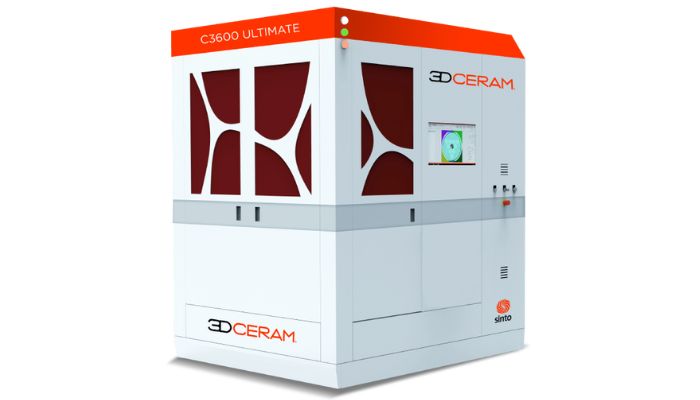
Photo Credits: 3DCeram
Admaflex 130 From Admatec
This ceramic 3D printer designed for industrial applications is by Admatec, a company based in the Netherlands. Launched in 2018, the Admaflex 130 is a 3D printer that prints ceramics using DLP technology. It features a 96 × 54 × 120 mm build plate, a minimum layer width of 0.03 mm and XY precision of 0.05 mm. This ceramic 3D printer, which weighs a total of 300 kilograms, is perfect for the production of functional and aesthetic parts that need to feature complex geometries, but also fine surfaces. The Dutch company boasts of its printer’s production capabilities, with figures such as the printing of 300 layers of material per hour.
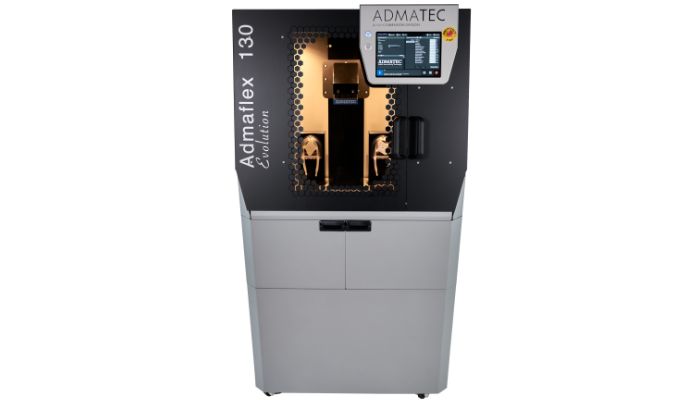
Photo Credits: Admatec
X1 160PRO From Desktop Metal
The X1 160PRO is an industrial machine originally from ExOne, now under the Desktop Metal brand since ExOne’s acquisition in 2021. The printer has a volume of 800 x 500 x 400 mm and uses binder jetting, making it the world’s largest binder jet 3D printer for the production of metal, ceramic or composite parts according to DM. The largest of the X-Series, it is possibly best known for its capabilities with metal 3D printing, but it is equally adept when it comes to ceramics allowing for parts with high density and repeatability. In addition to its generous volume, it can print a layer with a thickness between 30 and 200 microns, at a speed of up to 10,000 cm3 per hour.
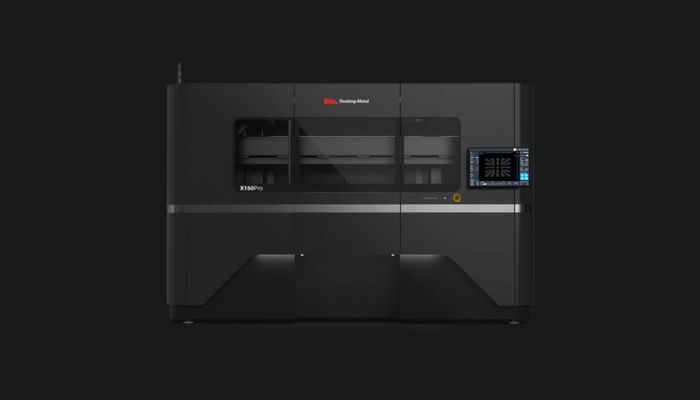
Photo Credits: Desktop Metal
CeraMax Vario V900 from Lithoz
The CeraMax Vario 900 3D printer from Lithoz is the first to produce large, thick-walled, fully dense parts from oxide and non-oxide ceramics. It is also capable of processing dark ceramics such as silicon carbide at full density. The printer is based on Lithoz’s new LIS technology, which enables additive manufacturing using industrial water-based suspensions with very low levels of organic binders. The CeraMax Vario 900 also stores and manages all process data with database support, thus guaranteeing seamless documentation of print jobs. The printing process can be monitored via real-time remote video transmission. Find out more in the video below.
The S600D Ceramic 3D Printer From Lynxter
Lynxter is a French manufacturer of professional machines that are compatible with a wide range of materials, including ceramics. Among its solutions is the S600D, a 3D printer on which it is possible to quickly and easily change tool-heads and therefore nozzles, thus widening the range of possibilities. The PAS11, for example, which is suitable for ceramics, and more specifically ceramic paste. The S600D offers a printing volume of Ø390mm x 600mm and is compatible with alumina, stoneware, porcelain, zirconia and cordierite. The tool-head is equipped with a micro-dosing pump to ensure paste dosage and guaranteed quality prints. Lynxter offers its own ceramics in 55 ml syringes.

Left, the S600D 3D printer; right, the PAS11 tool head (photo credits: Lynxter)
The Pam o2 MC From Pollen
With the PAM MC series, French company Pollen is able to offer versatile ceramic 3D printers that can process a wide variety of industrial materials to create functional parts. These 3D printers use extrusion and pellets. More specifically, the pam o2 MC printer measures 834 x 834 x 925 mm, has a print speed of 160 mm/s and a print volume of 300 x 300 mm. The machine is the result of the development of power electronics and a reinforced, lighter architecture to ensure ease of use while offering high-speed print quality and professional results.
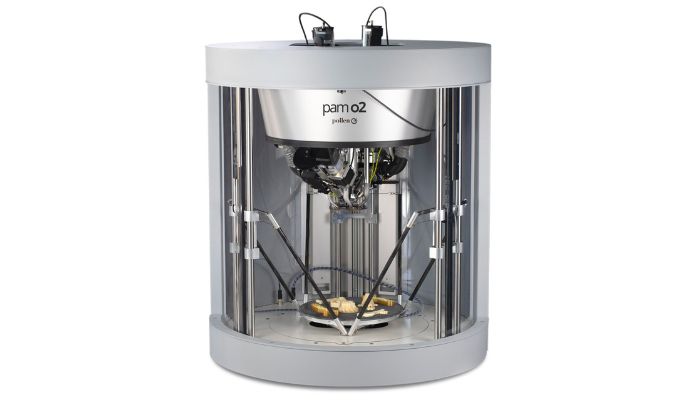
Photo Credits: Pollen AM
ProMaker LF10 From Prodways
The ProMaker LF10 is an industrial 3D printer designed by French manufacturer Prodways. It can process highly viscous materials, making it ideal for the production of ceramic parts. The machine uses Prodway’s DLP MOVINGLight® technology, which guarantees high precision and rapid production: with a resolution of up to 30µ and a power output of 150mW/cm², it can handle even the most demanding ceramic materials. The relatively large printing area measures 300 x 445 x 200 mm. What’s more, the 365nm wavelength ensures fully controlled curing and limits the risk of light-scattering effects, resulting in precise details and quality parts.
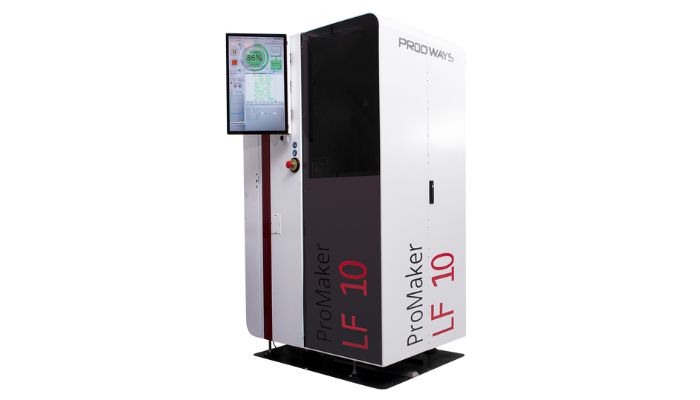
Photo Credits: Prodways
VX1000 from Voxeljet
Next one our list of ceramic 3D printers is the VX1000 which was developed by German manufacturer Voxeljet, well-known for its industrial range of machines. This machine uses Binder Jetting technology to manufacture with ceramic materials, sand, and some polymers, such as polymethacrylate. The VX1000 is an industrial printer that specializes in the development of moulds and small production runs, it can also be used for research due to the range of materials it can manufacture with. It has a printing volume of 1000 × 600 × 500 mm and can reach a layer thickness of 80-300 μm.
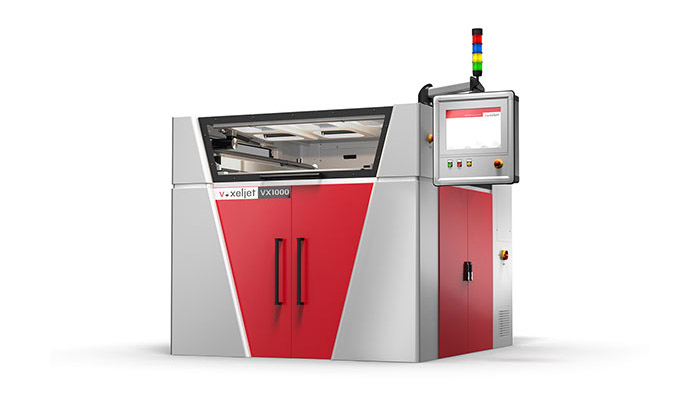
Photo Credits: Voxeljet
The Carmel 1400C Ceramic 3D Printer From XJet
The next ceramic 3D printer on our list is a little different. Coming from XJet, the system uses the company’s patented nano particle jetting (NPJ) technology, which is a form of material jetting. How it works is that nano particles (either ceramic or metal) in ink are jetted directly onto a build platform along with soluble support (which can be washed safely away with water). This enables highly complex geometries for high-quality end-use parts with little to no environmental waste. The Carmel 1400C is the company’s ceramic solution with a build volume of 500 x 140 mm (19.7 x 5.5 in), a layer thickness of 7-10 microns and a build speed of up to 0.7mm height per hour. It is compatible with technical ceramics like Zirconia and Alumina which maintain their strength and density even after printing for strong and accurate end-use parts.
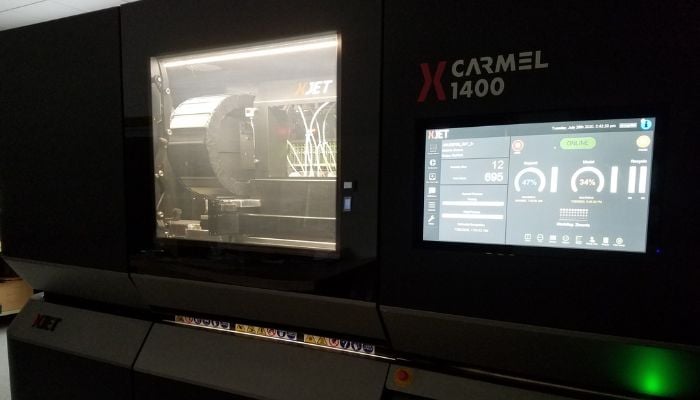
A look inside the X Carmel 1400C ceramic 3D printer (photo credits: XJet)
Desktop Ceramic 3D Printers
3D PotterBot Micro 10 from 3D Potter
3D Potter is an American manufacturer that specializes in 3D printing ceramic materials with material deposition technologies. According to the manufacturer their range of ceramic 3D printers are the only ones on the market that allow fabrication with real clay. The Micro 10 is an entry-level ceramic 3D printer ideal for the classroom, or for an artist interested in ceramic 3D printing technology. The Micro 10 features a 1,000 ml extruder with a build envelope of up to 1 foot. Despite being the smallest clay printer the company has, it is capable of printing at high speeds and its compact design is ideal as it fits in any space.
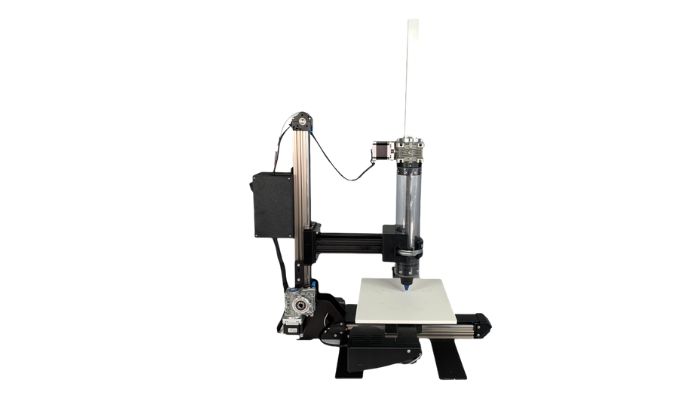
Photo Credits: 3D Potter
Matrix M700 From Eazao
Eazao is a Chinese manufacturer of 3D printers. It has a range of ceramic 3D printers called Matrix, which can be used to create a variety of ceramic structures, such as original vases, decorative wall panels and sculptures. The Matrix series is comprised of three models: the M500, the M600 and the M700. They differ only in size, the Matrix M700 being the largest of the three with dimensions of 900 x 1200 x 1100 mm. Its maximum print volume is 500 x 500 x 700 mm, and layer resolution ranges from 0.4 to 1 mm. The nozzle diameter is 1.5 mm. What’s more, the Matrix M700 is capable of printing a wide variety of materials, such as porcelain and clay, at speeds from 10 to 40 mm/s minimum. It uses Direct-Ink Writing (DIW) technology. The printer can also be connected to a color touch screen, and features connections for USB and SD cards. What’s more, the Matrix range is compatible with Linux, Windows and Mac operating systems, Cura slicing software, SLic3r, Simplify3D, etc., as well as STL, OBJ and other input formats.
The Bison 1000 Ceramic 3D Printer From Tethon 3D
Tethon 3D’s DLP Bison 1000 printer is synonymous with precision, reliability and quality and is particularly suited to space and defense applications. Institutions using the printer for educational purposes in these fields even benefit from a price reduction, though on Tethon’s official website, the printer is priced at $19,950. The Bison 1000 features an open materials system and is therefore compatible with a wide range of materials from different manufacturers. This allows users to try out different ceramics and adjust their own settings. The printing plate measures 110 x 60 x 138 mm, with a layer thickness of between 25, 50 and 100 μm. A camera and an app also enable remote control of the printer and monitoring of the printing process. Specific Tethonware software is also included.

Photo Credits: Tethon 3D
The LUTUM Series From Vorm Vrij
The LUTUM range of ceramic 3D printers is offered by Dutch manufacturer VormVrij. These desktop machines are designed to be durable and easy to maintain. The latest models in the series are the LUTUM 4 M and 5 M, although other models are available. The predecessor of the LUTUM 5 M is the LUTUM 5, a 3D printer featuring a 32-bit operating system, 7-inch touchscreen, wifi connections and 32 GB memory. It features two extruders that can be used sequentially with different ceramic types and colors, or in parallel to increase output volume and print speed. What’s more, this stainless steel V10 extruder can print continuously over long sessions, so you can load a file and leave the printer running for hours. The LUTUM 5 is one of the brand’s largest machines, and its print volume is slightly smaller than that of the LUTUM 4.6 (95 liters vs. 100 liters).
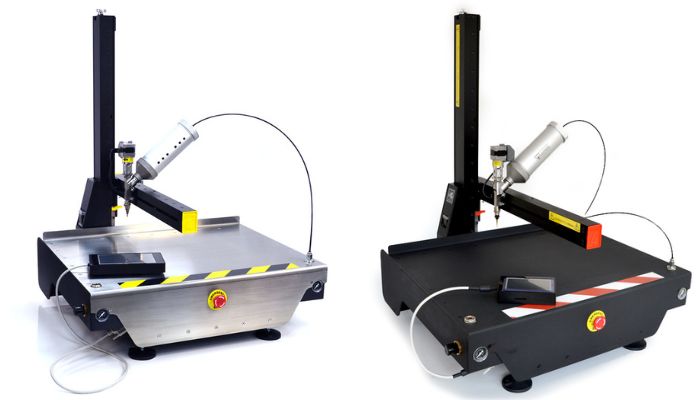
The LUTUM 5 (left) and LUTUM 4 (right) are part of VormVrij’s LUTUM range (photo credits: VormVrij)
Delta WASP 40100 Clay from WASP
One of the solutions from the well-known, Italian manufacturer WASP is the Delta WASP 40100 Clay, a desktop-sized ceramic 3D printer that comes with a special feature. Printing is done directly onto the desired surface, such as the floor. So there is basically no printing plate. This gives the advantage of bypassing the necessary waiting time for drying. Also available is an XL extruder, which allows the printer to create larger prints in less time. It is compatible with various materials such as porcelain, stone, refractory materials and clay. The printer can also be complemented with a professional clay kit which includes the clay extruder and LDM WASP Extruder 3.0. This is suitable for all liquid-tight and ceramic materials.
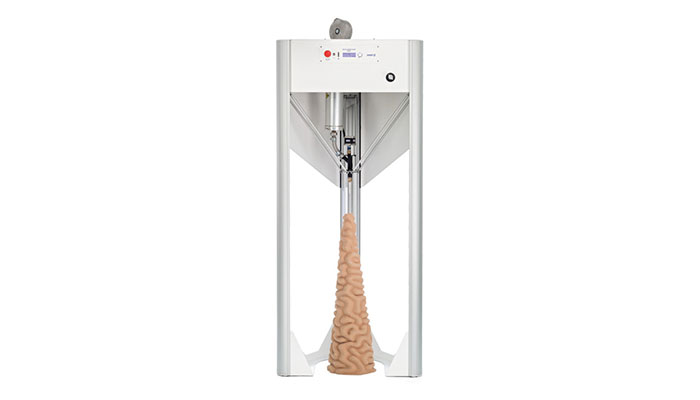
Photo Credits: WASP
StoneFlower 3.0 from StoneFlower
Composed of researchers, scientists and engineers, StoneFlower is developing 3D printers that can handle ceramics. Among the company’s solutions is the StoneFlower 3.0. With a print volume of 50 x 50 x 50 cm, the extrusion-based printer incorporates an all-metal chassis for stability and speed. In addition, the 3D printer has a touch screen for ease of use and an option to pause and resume the printing process at any time. With a weight of 35 kg, its printing speed varies between 30 and 100 mm/s. Compatible with the vast majority of slicers available on the market, the StoneFlower 3.0 is, according to the company, ideal for easily designing ceramic parts.
What do you think of our listing? Did you find what you were looking for? Let us know in a comment below or on our Facebook and Twitter pages! Sign up for our free weekly Newsletter, all the latest news in 3D printing straight to your inbox!






